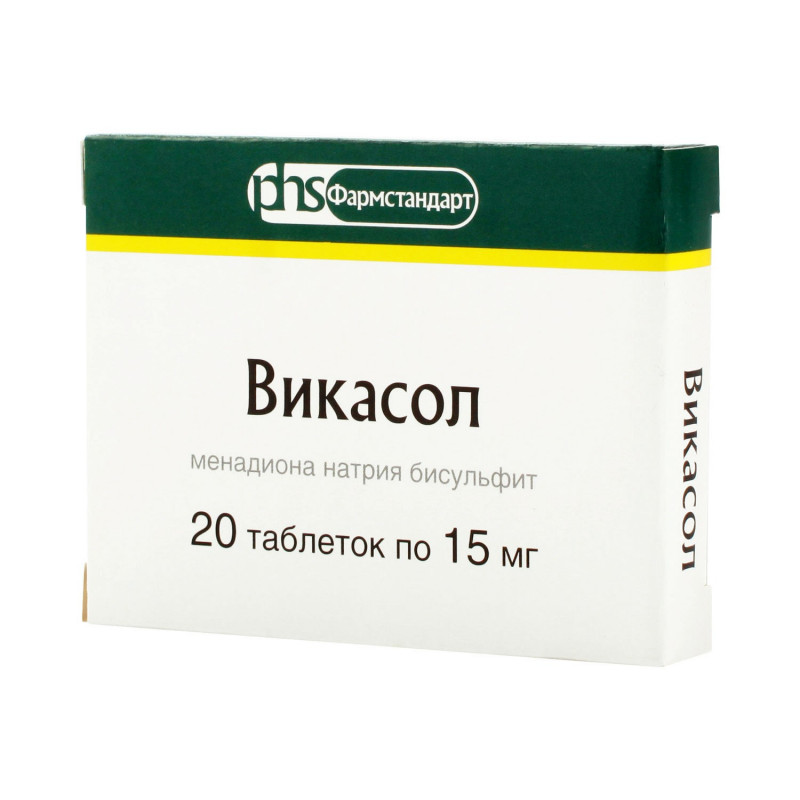



 All payments are encrypted via SSL
All payments are encrypted via SSL
 Full Refund if you haven't received your order
Full Refund if you haven't received your order
Vikasol is a synthetic water-soluble analogue of vitamin K, promotes the synthesis of prothrombin and proconvertin, increases blood clotting by enhancing the synthesis of II, VII, IX, X hemocoagulation factors. It has a hemostatic effect (with a deficiency of vitamin K, increased bleeding occurs). The effect appears 12-18 hours after intramuscular administration.
Hemorrhagic syndrome associated with hypoprothrombinemia; hypovitaminosis K (including obstructive jaundice, hepatitis, liver cirrhosis, prolonged diarrhea), bleeding after injuries, injuries and surgical interventions, as part of complex therapy of dysfunctional uterine bleeding, menorrhagia. Treatment and prevention of hemorrhagic disease of the newborn. An overdose of drugs - antagonists of vitamin K (neodikumarina, fenilina, etc.).
Hypersensitivity to the drug. Increased blood clotting, thromboembolism. Hemolytic disease of the newborn.
Carefully: deficiency of 6-phosphate dehydrogenase, liver failure, pregnancy.
Adults Vikasol prescribed inside 15-30 mg per day; intramuscularly - 10 -30 mg per day.
Children under the age of 1 year - 2-5 mg per day, from 1 to 2 years old - 6 mg per day, 3-4 years - 8 mg per day, 5-9 years - 10 mg per day, 10- 14 years - 15 mg per day. Reception frequency - 2-3 times a day.
The maximum daily dose of the drug for newborns - 4 mg.
Duration of treatment is 3-4 days. The course of treatment is repeated after 4 days break.
Reduces or blocks the anticoagulant action of neodicoumarin and fenilina. Does not affect the anticoagulant activity of Heparin. Simultaneous administration with broad-spectrum antibiotics, quinidine, quinine, high-dose salicylates, antibacterial sulfonamides requires an increase in the dose of vitamin K.
In hemophilia, von Willebrand and Verlgof disease, the drug is ineffective. If glucose-6-phosphate dehydrogenase is deficient, it can cause hemolysis.
In the dark place.
Vikasol